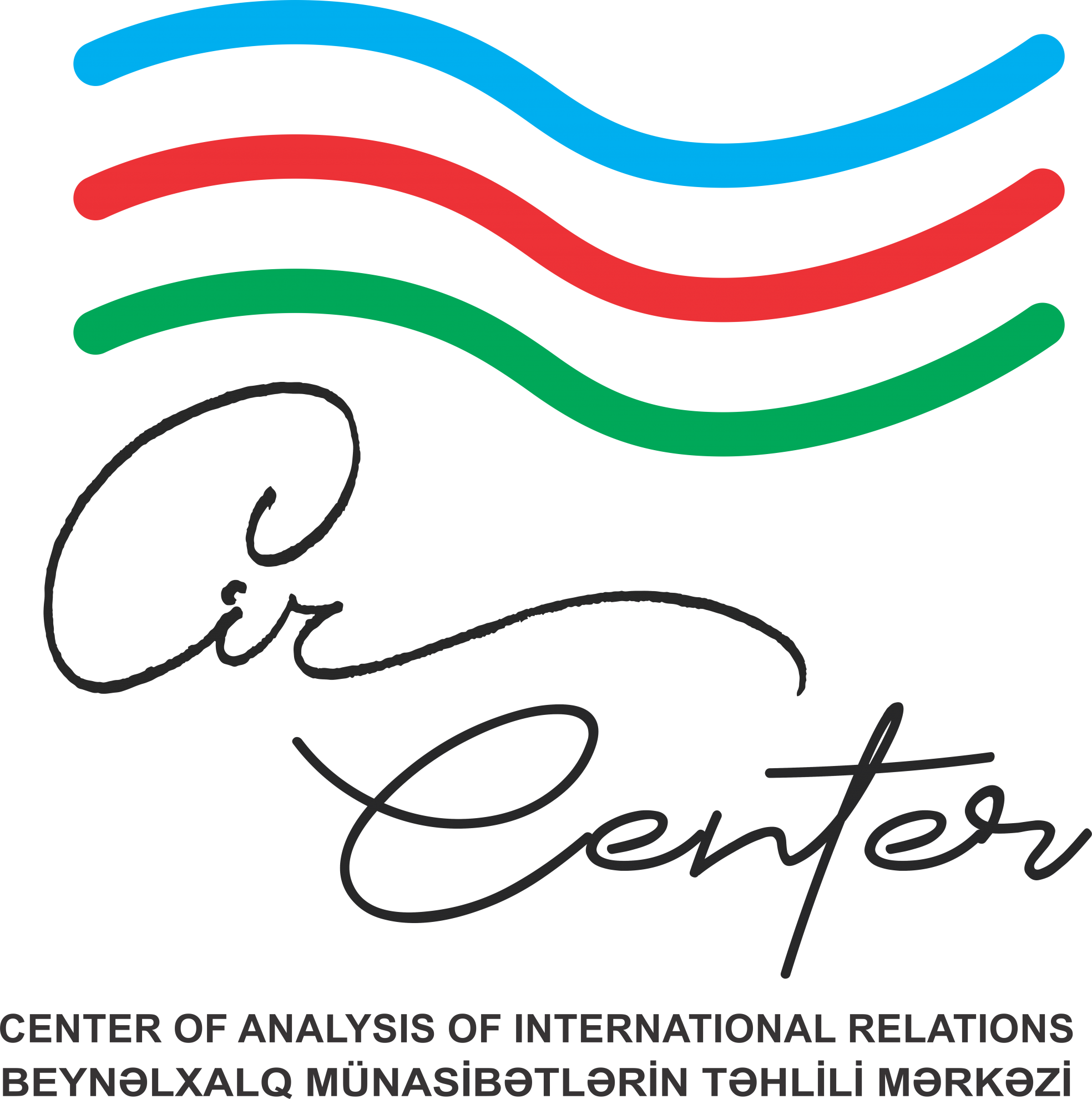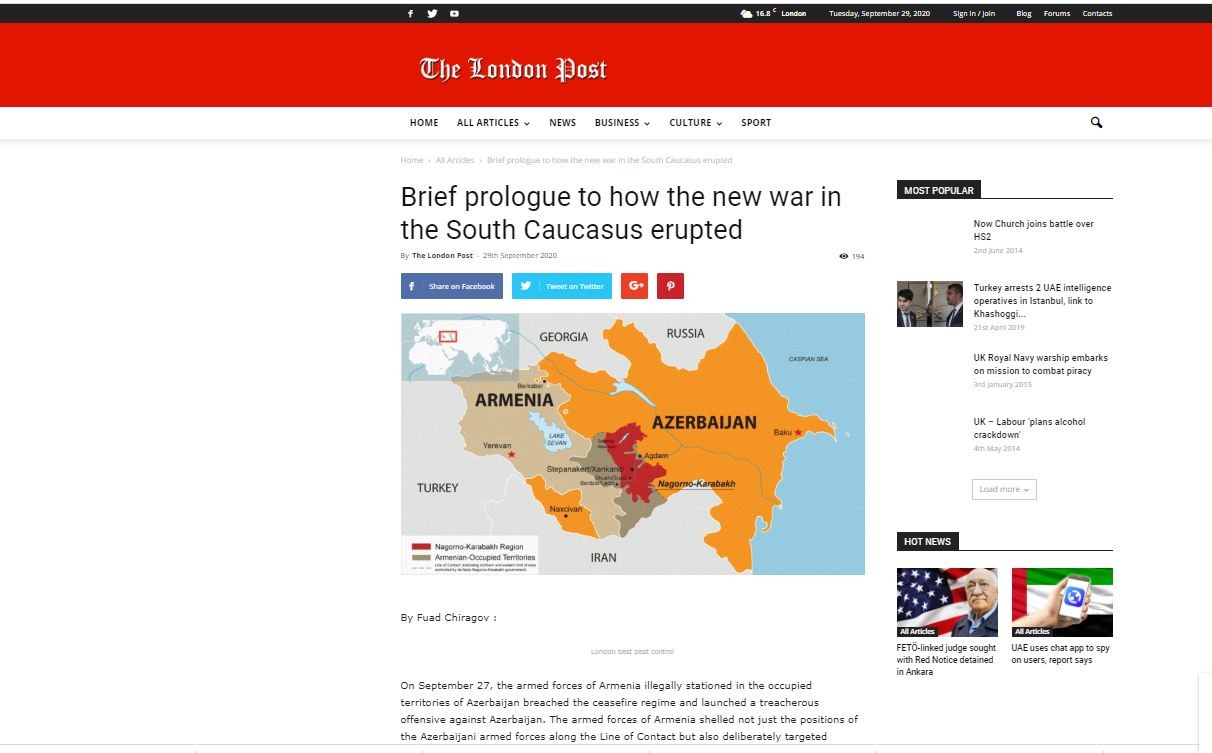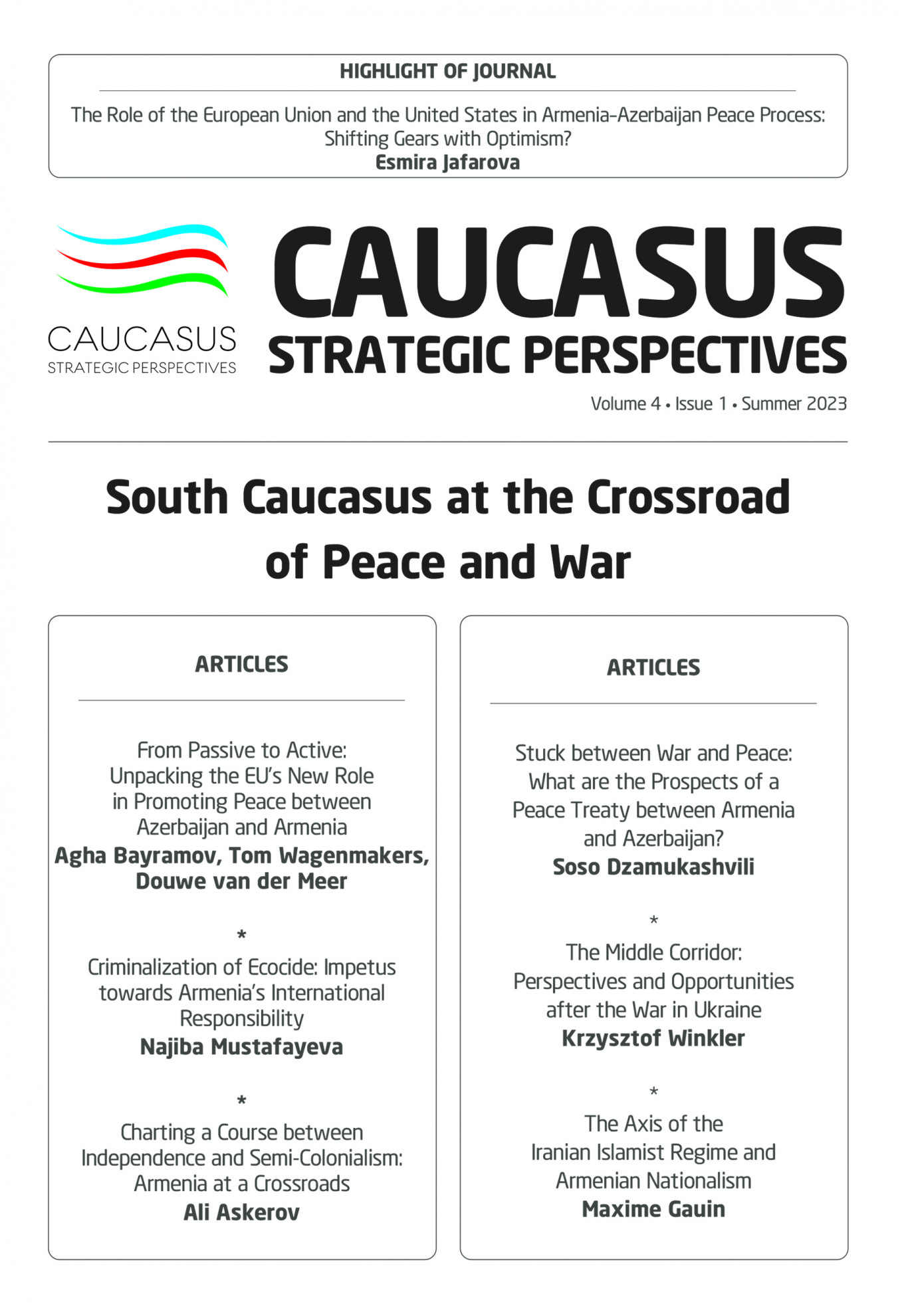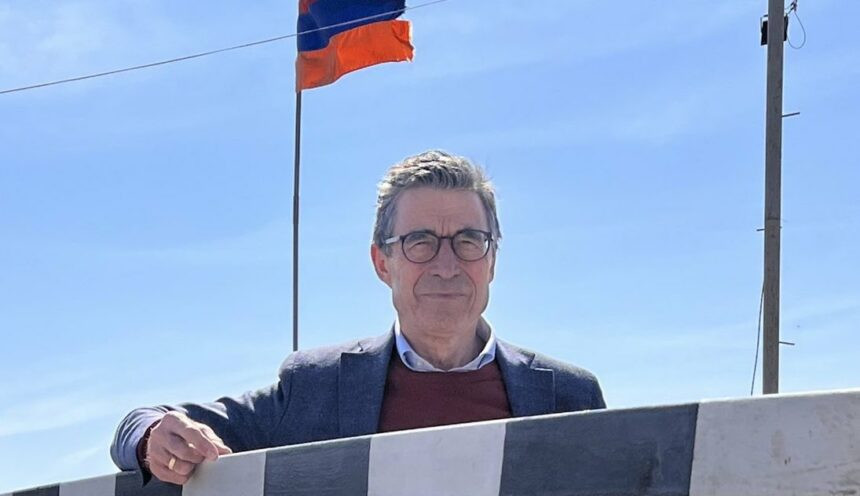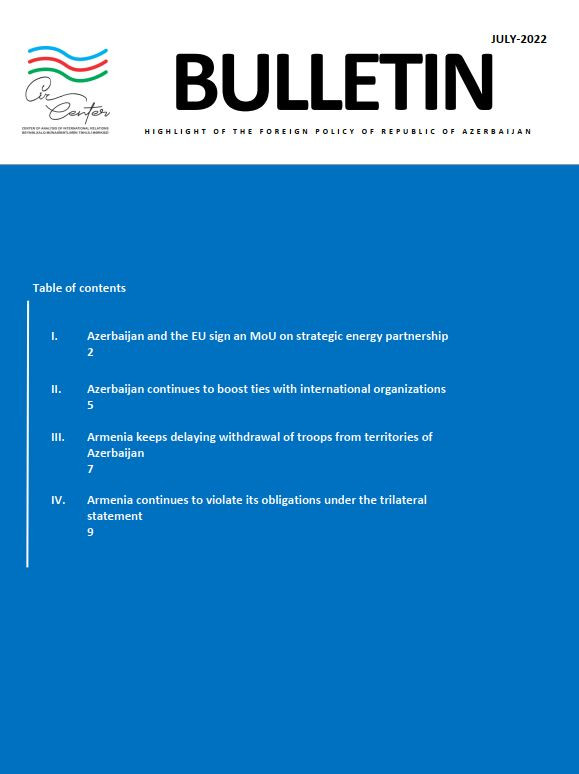On September 27, the armed forces of Armenia illegally stationed in the occupied territories of Azerbaijan breached the ceasefire regime and launched a treacherous offensive against Azerbaijan. The armed forces of Armenia shelled not just the positions of the Azerbaijani armed forces along the Line of Contact but also deliberately targeted villages, other populated areas and civilian infrastructure beyond the front line, and thus grossly violated the international humanitarian law, including the Geneva Convention of 1949. Just in the first two days, more than 27 people was injured, many civilians including one entire family of five people, and two teenagers of 13 and 14 years old were killed.
In compliance with international law invoking the right of UN member states to self-defense under Article 51 of the UN Charter, Azerbaijani armed forces had to respond adequately and launched a self-defense or counter-offensive operations against Armenian forces, liberating several villages in Fizuli and Jabrayil districts and regaining control over strategic heights in Murovdag that have been under the Armenian occupation since 1993. Also, On September 28, Azerbaijan had to announce a martial law following resumption of full-scale war in the occupied territories of Azerbaijan. In other words, Azerbaijan had to exercise its inherent right of self-defense under international law and responded proportionate countermeasures. In response, Armenia announced a military mobilization in order to deploy more troops to the occupied territories of Azerbaijan.
In April 2018, the socio-economic problems, endemic corruption, and the widening gap between the country’s haves and the have-nots during the old regime triggered the mass protests in Armenia. The former president Serj Sarkisyan, who was a warlord and war-criminal was not able to remain in the power as a Prime Minister after the Constitutional reforms. All eyes and expectations turned at new Prime Minister Pashinyan who came to the power as a leader of popular upheaval as a hope whether he would be able to be a savior of his nation and to rescue the country from the edge of an imminent precipice or after some time all hopes about reforms and economic prosperity would be replaced with disappointments and the country would continue to depopulate and die slowly. After two years, he failed all expectations, he has not been able to transform to “a great reformer” but brought his country to the bloodiest and most tragic war since the beginning of 1990s.
Lack of experience in foreign policy, weak institutional positions of Pashinyan government and ongoing political struggle with old and hard-liner clans pushed his government to make inconsistent, irrational and hostile declarations and moves that have made the new war inevitable. Instead of the language of moderation and peace-seeking, Pashinyan, especially for his domestic audience, opted for tough, nationalist and maximalist language and obstructed any possible progress in the negotiation and peaceful resolution of the conflict with Azerbaijan. Armenia remained one of the most three highest militarized nations in the world for the year 2019 as it was in 2016 before N. Pashinyan came to power according to the Global Militarization Index (GMI) complied by Bonn International Center for Conversion.
Unfortunately, the OSCE Minsk Group that was a main responsible international institution for mediation and resolution of the conflict and international community as a whole did not pay adequate attention to deliberate obstruction and torpedoing of peace and negotiation process. They have not just only done anything to prevent further rise of escalation but also shamefully neglected for 30 years the occupation and the violation of basic human rights of more than million IDPs. Instead, their approach and policies towards the conflict, in fact, can easily be interpreted as “appeasement of the aggressor” that committed war crimes and crimes against humanity, including the massacre in Khojaly in 1992. The OSCE Minsk Group remained blind to military build-up of Armenia in the occupied territories of Azerbaijan, illegal change of demography through illegal settlement policy, alteration of the centuries-old toponyms, destruction of the cultural heritage in the occupied lands. They have not attempted to do anything to make Armenia comply with the UN Security Council resolutions 822, 853, 874 and 884 adopted in 1993, that demand from Armenia to withdraw immediately and unconditionally its armed forces from the occupied territories of Azerbaijan.
Therefore, the OSCE Minsk Group is the main responsible of continuing occupation of the territories of Azerbaijan, violation of basic human rights of IDPs and the recent Armenian military aggression against Azerbaijani territories and civilians. Unfortunately, the recent wave of escalation will be an example and case study how in the XXI century the international community and institutions (the OSCE Minsk Group) failed their missions in negotiation, peacebuilding process and finding in lasting and just peace. Probably, this case will also be a very good study material for international relations and peace practitioners about what they shouldn’t do in their career endeavors.

